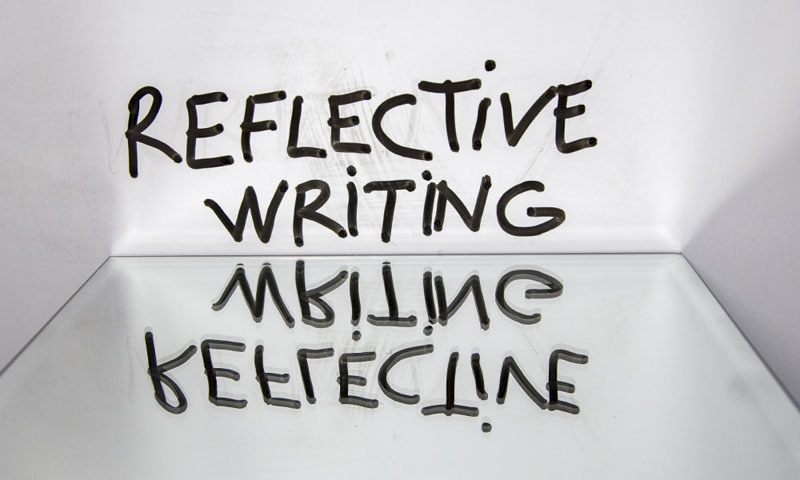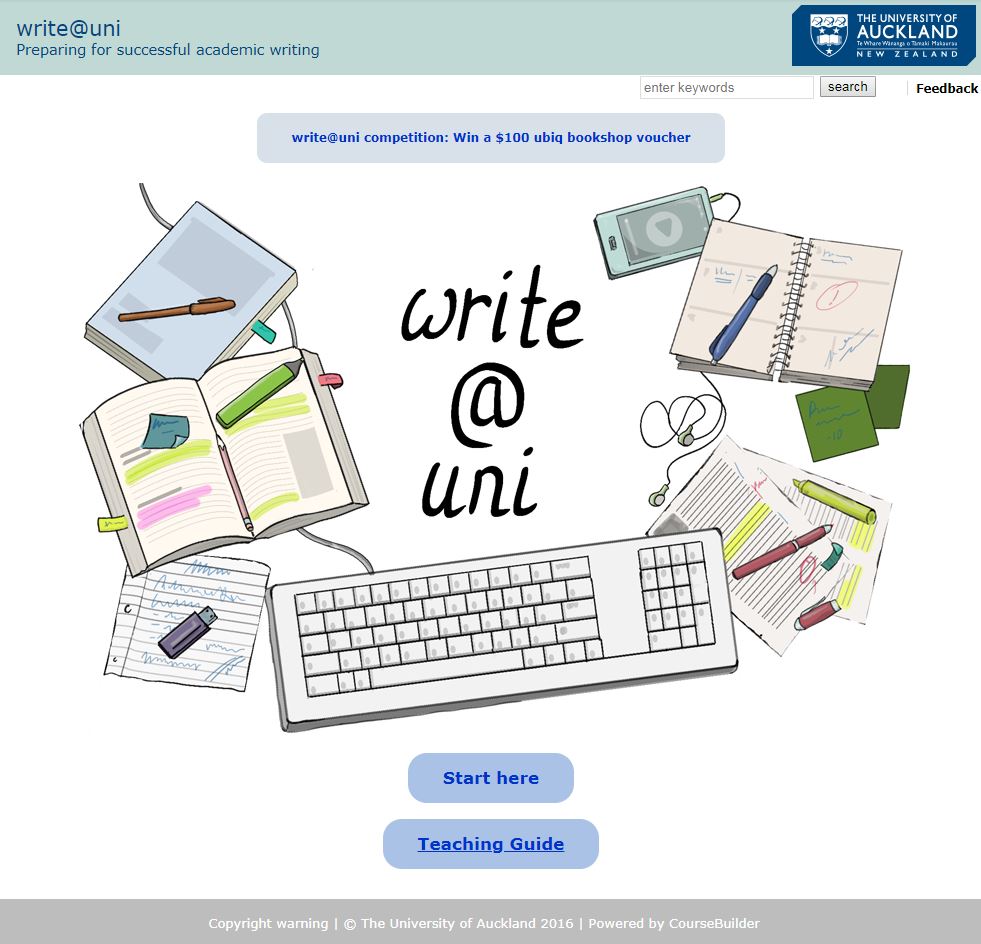A project which looks at write@uni, an on-line writing resource
This project’s resources were originally developed for entry level students in Engineering at the University of Auckland, by Jenny Mendieta Aguilar from Student Learning Services.
These resources might be useful to: teachers of entry level university students, teachers of English language enrichment, teachers of academic writing and teachers of Engineering.
Jenny Aguilar is a 2017 CLeaR Fellow. Watch her present her project at the 2017 CLeaR Teaching and Learning Symposium here. An interview with Jenny can be viewed here.
For similar projects, see: Online Writing Tools for Business Students and Student Writing Textbank.
Project background
Libraries and Learning Services recently developed the write@uni online resource to promote entry-level students’ understanding of university writing conventions and expectations. The resource was designed to alert students to their own assumptions about academic writing and raise their awareness of the demands that they are likely to encounter during their studies.
As part of Jenny Aguilar’s CLeaR 2017 Fellowship project, she aimed to assess the outcomes of the piloting phase of the online tool. Jenny investigated how academic staff integrated write@uni into their Stage One courses, how students interacted with the tool throughout the semester-long course, and what perceptions teaching staff and students had about the tool’s relevance and usefulness.
To this end, Jenny collected learner data from CourseBuilder and observed how write@uni was used in Canvas. Additionally, Jenny conducted focus groups with students and individual interviews with teaching staff. Four courses from three faculties participated in the study (Science, Engineering, and Arts). For this summary, Jenny has chosen to focus on one particular case: the faculty of Engineering.
The case study involved a Stage One general education Engineering course with more than 900 enrolled students, of which more than 10% speak English as an additional language. The course coordinator and lecturers used write@uni as a tool to help students become aware of the transition from high school to university writing.
Staff first explored write@uni and identified the content that targeted the learning objectives of the engineering course, and then imported the relevant write@uni content pages into Canvas. Lecturers referred students to the site at the beginning of the semester and implemented specific learning activities during the tutorials. The tool was also used in a writing tutorial that was part of the course.
Project reflection
Jenny Aguilar’s reflections on the project can be found below.
What were the project outcomes?
Findings from interview and CourseBuilder data indicate that engineering students had varied perceptions of the tool, and as a result used it with various degrees of frequency. While the participating students found the content highly useful, they had different opinions about its relevance. These perceptions appeared to have been influenced by students’ expectations, needs and previous experience with scientific writing. For example, some students interacted actively with the content when they were first introduced it, but they were unsure about how it was related to their assignment. There were other students who chose to spend less time on write@uni because their perceived learning needs (e.g., referencing) were different from the aims of the resource. Further, there were others whose previous experience with scientific writing seemed to have given them the confidence they needed to write their assignment without requiring additional support.
It would appear that students’ particular needs and academic writing background as well as their initial perceptions of write@uni had an impact on their decisions to continue to engage with the resource throughout the semester. Their decisions, however, were also significantly influenced by how and when the tool was used and referred to by teaching staff. Engineering students were able to identify why they had been recommended to use write@uni; however, they considered that it had been introduced too early in the semester, as they did not yet have enough information about the course assignment. Overall, students considered that a scaffolded approach, with a more direct connection to the written task, would have been beneficial.
The teaching staff were aware of the varied nature of the students’ responses, as well as the benefits and limitations of using write@uni as part of the course. They were equally mindful of the different ways in which the online tool could be used more effectively in the future. On the whole, they valued the opportunity they had to use write@uni, as both a teaching and learning tool, since it helped them provide an initial point of reference for students.
What are the implications?
The findings of this fellowship project support the idea that, early in the semester, and probably later too, students are likely to focus their attention on what they believe they need to learn. The risk is that sometimes, as one student put it, ‘you may not know what you need to know’. Yet students make decisions to engage with additional support services or resources based on these initial expectations and beliefs. It could then be argued that time is a key issue when introducing new supporting material in the classroom, as is how such material is used with students.
The results also highlight how important, but also how difficult it can be to strike the perfect balance. Teaching staff often need to make multiple and difficult decisions when planning the syllabus of a course, such as how much time should be allocated to subject-content instruction and (if needed) academic writing skills development. There is also the question about how structured or unstructured assignments should be and how much scaffolding should be provided, which in turn is related to decisions on the use of generic versus discipline-specific material and the provision of face-to-face and/or online support. To find answers to these complex questions, multiple iterations and ongoing evaluation of pedagogical initiatives are required.
What next?
Based on the results of the study and their own observations, teaching staff have discussed and made minor changes to the course that will be taught in Semester One 2018. A team from Libraries and Learning Services are working closely with the course coordinator and lecturers to implement a ‘just-in-time’ or ‘at-a-point-of-need’ strategy to the use of write@uni and other library online resources, with the aim to integrate academic writing and English language development opportunities more explicitly into the curriculum. The implementation process and outcomes of this initiative will be evaluated and compared against the findings obtained in 2017.
Project resources
To visit the write@uni website, see here.

